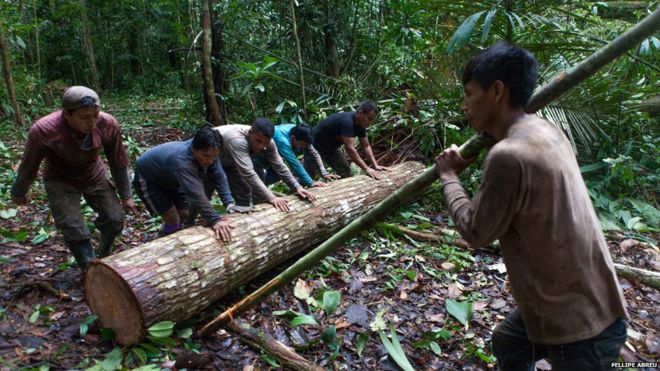A top government official in Peru said drug trafficking organizations laundered $250 million last year, while Peruvian and US authorities highlighted the key role other illegal economies such as illegal mining and timber trafficking play in facilitating money laundering operations.
At the International Drug Enforcement Conference, which is being held in Lima this year, Interior Minister José Luis Pérez Guadalupe said Peruvian drug traffickers laundered a quarter-billion dollars in 2015, reported El País. Peru’s National Police Director, Vicente Romero, noted how drug traffickers often use other criminal industries to launder their proceeds, saying, “the illegal mining platform is ideal for camouflaging money from other illegal businesses.”
On the eve of the conference, William Brownfield, US Assistant Secretary of State of the Bureau of International Narcotics and Law Enforcement Affairs, said he is interested in exchanging information with authorities in the region on the links between drug trafficking and illegal logging networks.
“Although they are distinct crimes, the organizations use the same transportation and distribution networks, the same money laundering and financial systems,” Brownfield said.
Meanwhile, authorities recently dismantled a timber trafficking network in Peru that had been operating for six years, reported La Republica. Law enforcement arrested 19 people in Lima and Pucallpa, including two police officers and two employees of the General Directorate of the Wildlife Flora and Fauna in Ucayali.
The arrests were the culmination of ten-month investigation by a joint force composed of organized crime prosecutors, national police officers and members of the Interior Ministry.
Over a six-year period, the loggers trafficked timber worth an estimated $20 million. The timber was exported to Asia and North America, according to La Republica.
InSight Crime Analysis
As the authorities point out, drug trafficking is intimately entwined with other illicit industries in Peru, some of which are considered even more lucrative than the cocaine trade. The recent timber trafficking bust demonstrates how the potential profits from illegal logging and mining can corrupt law enforcement officials, enabling these criminal structures to run their operations unmolested for years. By some estimates, 80 percent of all timber in Peru is removed illegally.
SEE ALSO: Peru News and Profiles
Environmental crimes such as timber trafficking are also seen as low risk because of the relatively light penalties offenders incur. Prison sentences for eco-traffickers range from 3-5 years in Peru, while drug traffickers receive anywhere from 8 to 15 years. This sentencing discrepancy is seen in other countries throughout Latin America as well, including Costa Rica, Brazil, and Colombia.

